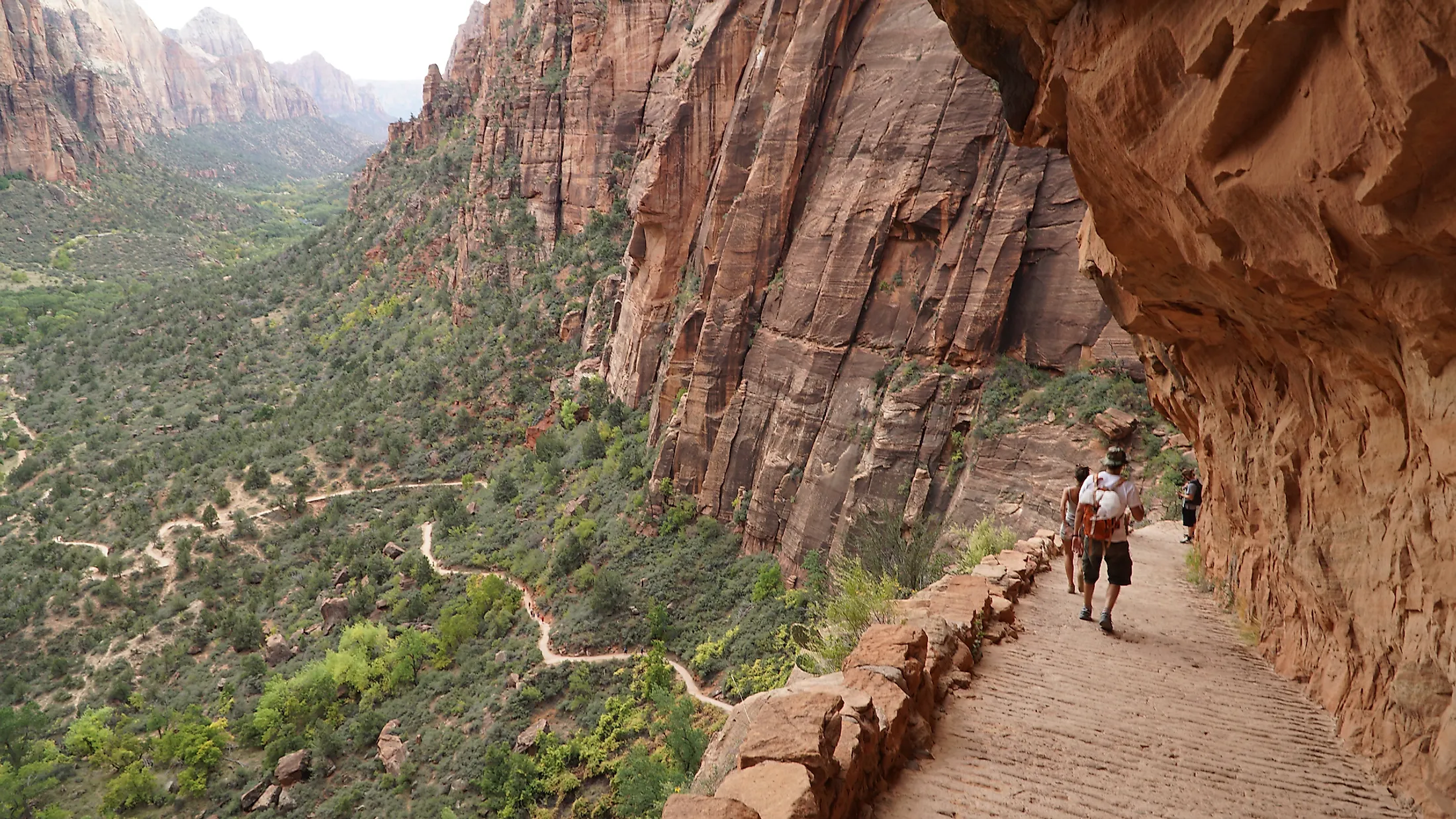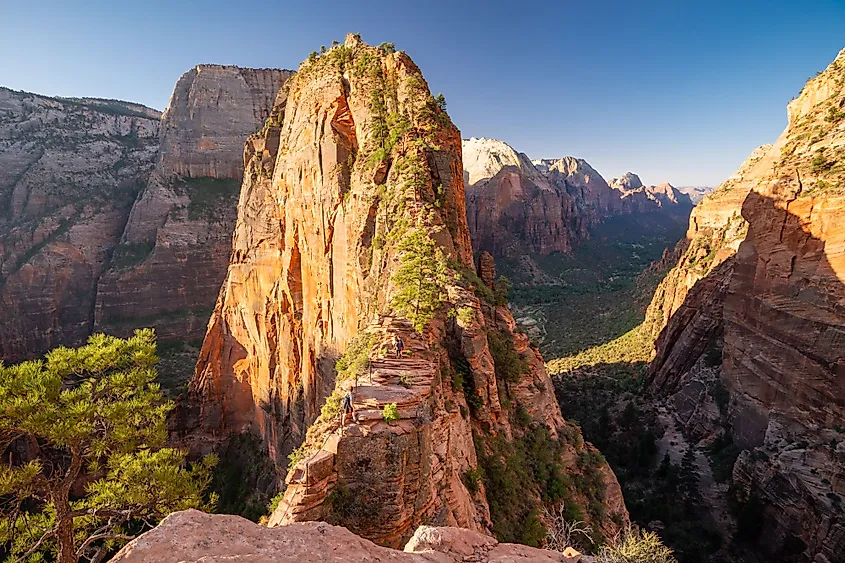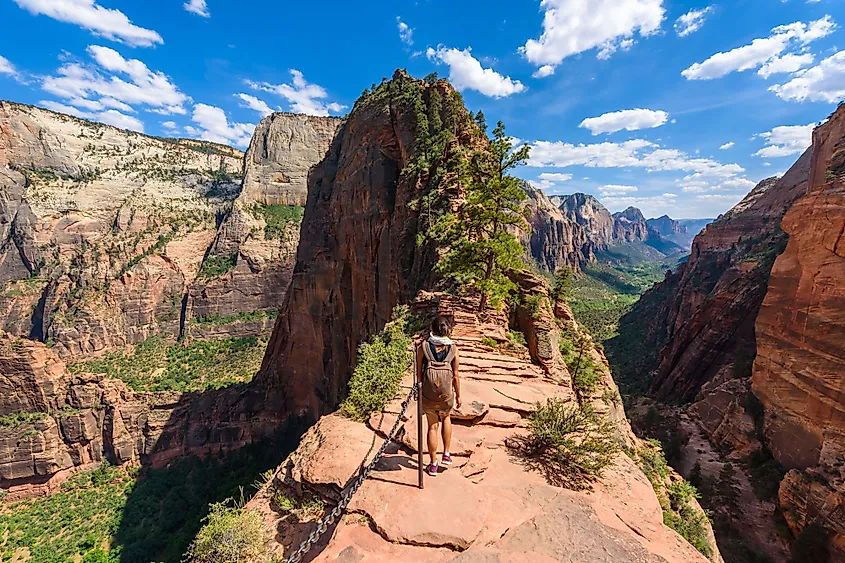
Angels Landing
Formerly referred to as the “Temple of Aeolus”, Angels Landing is a unique natural rock formation that is situated in the Zion National Park, within the Washington, Kane, and Iron counties in the southwestern part of the US State of Utah. Angels Landing is located close to the 2,110m high Cathedral Mountain and rises to an elevation of 1,760m with a prominence of 130m.
About The Angels Landing

The Angels Landing is one of the most well-known day hikes in the world. In 1926, a 4.0km long trail was cut out into the steep, rock-solid spine that continues to attract a lot of hikers and tourists who visit the Zion National Park. The hike has an elevation of 460m along the narrow rock fin that leads to the top of the Angels Landing at an elevation of 1,760m. As per the Yosemite Decimal System, the hike has been rated as a “Class 3 Difficulty.” From the top of Angels Landing, the hikers can get spectacular views of the Zion Canyon - a 26km long and 910m deep canyon which is the National Park’s most prominent feature.

The Zion National Park experiences a “Cold semi-arid climate” as per the Köppen climate classification. Therefore, the most favorable time to visit and hike the Angels Landing are the spring and fall seasons. The hike to the Angels Landing begins at the Grotto Trailhead, which serves as the 6th stop for the Zion Canyon Shuttle that works from the beginning of the spring season to late fall. For some time, the hike follows the course of the Virgin River along the West Rim Trail and reaches the west side of the canyon. From here, it slowly starts to gain elevation until it reaches the Refrigerator Canyon, where the steep incline levels off for a little bit as it enters the cool inner recesses of the cleft. As the trail gets close to the head of the Refrigerator Canyon, it starts to get steeper and strenuous. A series of 21 steep switchbacks referred to as “Walter’s Wiggles” have been built in the eastern wall of the Refrigerator Canyon that helps to take the hiker upwards. Constructed in 1926, Walter’s Wiggles is regarded as one of the engineering marvels of the Zion National Park and has been named after the park’s first superintendent – Walter Ruesch, who also supervised its construction.

After reaching the top of the switchbacks, the trail makes a gradual ascent to the Scout Lookout that offers spectacular views of the Big Bend of the Zion Canyon. The Scout Lookout generally serves as a turnaround point for those people who do not want to make it to the top of the Angels Landing. The final part of the hike is nevertheless very exhilarating and here the trail follows the carefully-carved steps along the rocky spine. This part of the trail called the “chains section” is indeed very strenuous and is lined with several sheer drop-offs and extremely narrow paths. Many chains and guardrails for gripping are provided for the final parts of the trail that leads to the top of the Angels Landing at an elevation of 1,760m. In 1987, the West Rim Trail of the Angels Landing Trail was placed in the National Register of Historic Places. In July 2018, due to damage caused by a severe storm, the trail was closed for visitors. After repair, the trail was reopened in September 2018. As of March 15, 2021, about 13 people have died as a result of falls while hiking the Angels Landing Trail.











